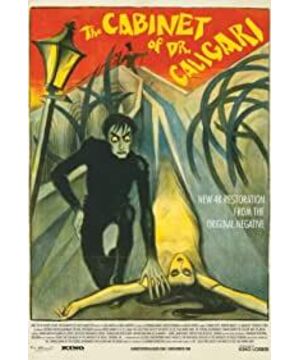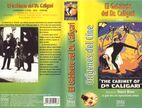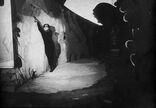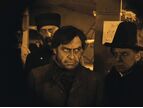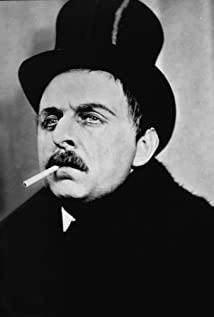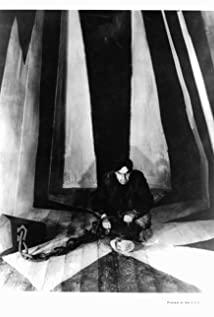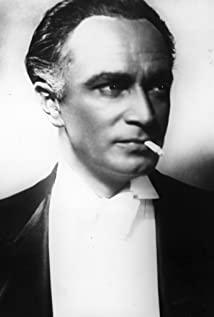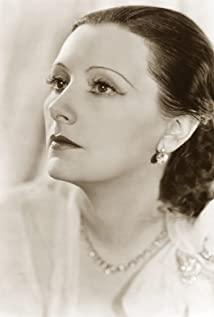Originating from expressionism in the early 20th century, it rebels against authority, denies rational truth, believes that subjectivity is the only one, and often seeks and expresses the true essence through the distortion of external objects. The sets and props built by the three Hurricane painters in this film are the perfect embodiment of this. Most of the buildings in the film are shaped into geometric shapes with eccentric shapes and sharp lines, which use absurd methods to cut off people's familiarity with the town in the mouth of the protagonist. Coupled with the actors' gothic makeup and stage-like performances, the film makes the movie more beautiful. The whole story seemed insanely crazy, as if watching not a movie but an expressionist masterpiece.
The film is basically shot in a fixed camera position, but there are also many close-ups of characters that are cut into consecutive shots. Most of the scene frames do not fill the entire screen. The diamonds, circles and irregular geometric shapes are interspersed, and the circles in and out are frequently used. It makes the film's eerie color even more intense. The control of color tone is also far beyond my expectations. I never thought before that in a black and white film, the cool and warm colors of day and night can be displayed so clearly. The soundtrack of this film seems to be quite different due to the different versions. Although the version I watched is not very good, it matches the rhythm of the film very well, and the design of the dialogue font and background board is quite expressionistic. , which foreshadows the horror tone of the film from the very beginning.
The film begins with the narrative of the protagonist Francis. He and his friend Alan met the eccentric Dr. Caligari and his sleepwalker Caesar at a garden party. The sleepwalkers predicted that Alan would die at dawn the next day. The next day the soul returns to the West. Francis believes that the sleepwalker killed Alan, but investigations and surveillance of the Doctor have made no progress. While Francis is guarding outside the Doctor's hut, his fiancée--he and Ellen's dream--is nearly kidnapped by Caesar, and the crowd rushes into the hut to find a dummy lying in the box. Francis tracked the escaped doctor all the way to the mental hospital, only to find that the so-called "Doctor" was the director of the mental hospital, because he was addicted to a story about a sleepwalker hundreds of years ago, and used the patient to turn himself into the mysterious Caligari in the story. , committed two murders in the town. When I saw this, I had no reason to think of the strange and terrifying little stories written by Edgar Allan Poe, and thought that the sad thing was not the sleepwalker, but the dean who lost himself.
But as the narrative wraps up, jumping back to the present timeline turns Francis' story upside down. It wasn't the dean who went crazy, but Francis. "Fiancée" was a patient he asked but didn't get, and "Sleepwalker" was also a member of the mental hospital. Caligari was not the dean's fantasy, but his. Such an interpretation is also a perfect contrast to the film's wildly unreal, bizarre world. Of course, whether the ending means that all this is Francis' fantasy, or whether the dean controlled him with authority, has always been controversial, but such several reversals and open endings are still played out in today's suspense films. , the most similar example is probably Martin Scorsese's "Shutter Island". And such a work appeared in 1920, when the film career was just starting, and it is enough to be called a masterpiece based on its exquisite structure in the plot.
Of course, if such a work is placed in Germany, where World War I has just ended and the Nazis have begun to rise, it is not an over-interpretation of the political implications behind it. Besides, many representatives of expressionism also use the work as a means of propaganda. In the film, Francis has changed from a victim of evil to a whimsical mental patient, and the dean has changed from a madman with obsessive-compulsive disorder to an authority that everyone obeys. Heart proof.
View more about The Cabinet of Dr. Caligari reviews


